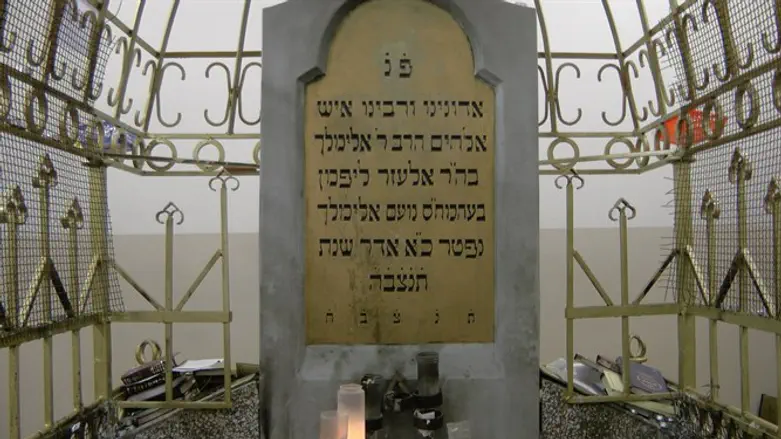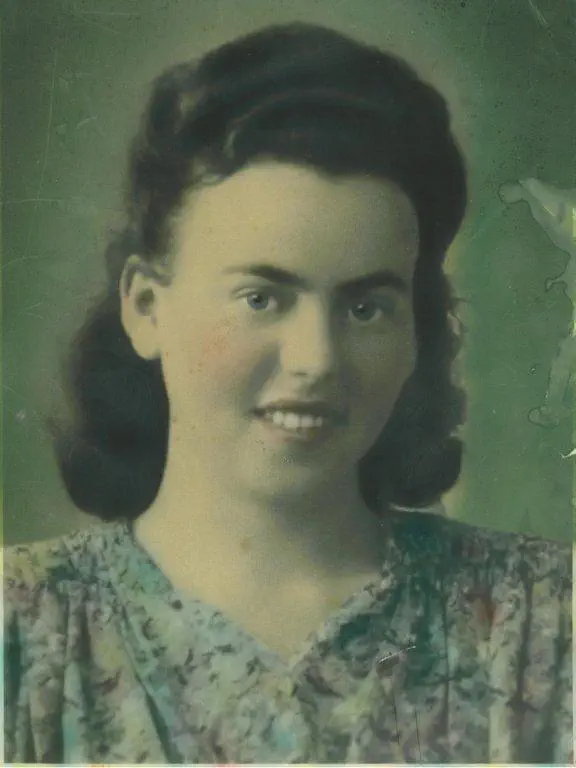
On the 21st day of Adar ( March 17, 2020 this year) Jews will again be traveling to Lizhensk, Poland to visit the grave of Reb Elimelech of Lizhensk on his Yahrzeit, the anniversary of his death.
Reb Elimelech (1717-1787), a renowned Hassidic master, succeeded his teacher, Reb Dov Ber, the Maggid of Mezheritch, who inherited the mantle of leadership from the Baal Shem Tov, originator of the Hasidic movement. Reb Elimelch’s students included the founders of the largest Hassidic dynasties; Kotzk, Gur, Belz, Sanz, Isbica, Radzin and Satmar.
Reb Elimelech, also known as the "Noam Elimelech", penned a legendary eponymous book on the Torah. Miraculous powers are ascribed to this work and interestingly, today it is often placed in hospital maternity rooms in Jerusalem as a segula (instrument of Divine protection).
There are wondrous stories about Reb Elimelech and his miracles, but he is most renowned for his great love of all Jews and for his sensitivity to the plight of widows and orphans.
In his “Prayer Before Prayer” he asks G-d:
"Protect and shield us from jealousy between fellows.
Let not jealousy enter our hearts and may others not be jealous of us.
On the contrary, place in our hearts the ability to see only the good in our friends and not their shortcomings!
May we speak to each other in a way that is straight and desirable in Your eyes. May there be no hatred between friends, Heaven forbid..."
Notwithstanding my Hassidic ancestry which includes direct descent from Reb Elimelech, while growing up in Haifa, Israel I never felt my Hassidic pedigree to be germane. I never imagined that my family’s forgotten roots in a small Polish shtetl would resurface in my own life.
Following my mother’s passing eleven years ago an unexpected link reappeared.
In the winter of 1939, as the Nazis reentered the shtetl of Tarnegrod where they lived, my grandparents made the wrenching decision to abandon their home and attempt to cross into Soviet-held territories. With their six daughters in tow and against the pronouncements of their Rabbi, who urged them to stay, my grandmother, who was adamant, insisted on going.
Descendants of the illustrious Reb Elimelech, the family had lived in this region in Poland for generations. Throwing caution to the wind, and partially buried under essential possessions and salvaged bolts of fabric from their erstwhile textile store, they set off in the dead of night in a horse-driven carriage and headed east into the unknown.
At the edge of the shtetl, my grandfather and his beloved leader Rabbi Josef Moshe Naftali Teicher walked alongside the slowly moving carriage, bidding each other tearful farewells, hoping to be reunited shortly. The dirt roads were swarming with celebrating Nazi soldiers streaming into the shtetl. Amidst great peril, my grandparents and their daughters miraculously reached the Soviet Union. Rabbi Teicher was discovered hiding in a shelter and unceremoniously shot dead. Almost all of the remaining 3000 Jews of Tarnegrod were annihilated at the Belzec Death Camp.
In 1945, after grueling years of bare survival in Siberia, Tajikistan and Uzbekistan, my grandparents and their six daughters slogged their way back to the Eschwege Displaced Persons camp in Germany. As the oldest daughter, my mother Penina (Pearl) was singularly credited with her family’s survival. She met and married my father in the DP camp and the remnants of the surviving family moved to Palestine.


Shtetl life, Hassidic Rebbes and the Noam Elimelech family tree were a distant memory. Hassidic melodies such as Reb Elimelech’s famous niggun were replaced by Hebrew songs such as “We came to this land to build and to be rebuilt”. The newest incarnation of the Jew emerged in our family; Zionist, soldier, modern, self reliant, and despite all the unspeakable horror, still staunchly believing and observant.
My mother, of blessed memory, passed away eleven years ago. The first anniversary of her death occurred on a Saturday night. It is customary to recite the memorial prayer Kel Maleh Rachamim in public at the afternoon Mincha service preceding the end of the Sabbath. Trembling while holding the Torah scroll, I recited the traditional prayer.
Following the completion of services, a visiting Israeli rabbi, whom I had never met previously, approached me and asked “whose Yahrzeit are you observing”? “My mother’s,” I answered hesitantly, “it begins tonight”.
Smiling, he remarked, “You know, of course, that tonight, the eve of the 21st day of Adar is the Yahrzeit of the holy Reb Elimelech?” Astonished, I immediately called my only sister in Israel to inform her of this startling coincidence. Before I could relate my serendipitous discovery. she interrupted my breathless voice with “I know. I know. My son brought home a Torah newsletter from the synagogue this morning and I read that thousands of Jews will be leaving for Poland TONIGHT to celebrate Reb Elimielch’s Yahrzeit.”
Two siblings 6000 miles apart discover independently, hours before the first anniversary of their mother's death, that her passing exactly coincides with the anniversary of the death of her illustrious ancestor.
I asked my close friend Professor David Kazhdan, former Chair of Mathematics at Harvard University and recipient of the Israel Prize: “When does coincidence become a religious experience?”
“The first time”, he answered.
Several months later I visited the grave of Rebbe Elimelch in Lizhensk, Poland.
For the first time.
